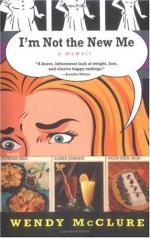[Illustration: JACQUES LOUIS DAVID AS A YOUNG MAN. FROM A PAINTING BY HIMSELF.
The exact date of this picture is unknown; but it was, presumably, painted before 1775, when David, having received the Prix de Rome, went to Italy for the first time. It was given to the Louvre, where it now is, by the painter Eugene Isabey in 1852; David had presented it to the elder Isabey, also a painter.]
It was undoubtedly at this time, when revolt was in the air and man was preoccupied with his primal right to liberty of existence, that art was given the bad name of a luxury. Until its long prostitution throughout the seventeenth century, its mission had been noble; but now, coincident to the fall of the old regime, the people, from an ignorance which was more their misfortune than their fault, confounded art with luxuries more than questionable, in which their whilom superiors had indulged while they lacked bread. With the curious assumption of Spartan virtue which rings with an almost convincing sound of true metal through so many of the resolutions passed by the National Convention of France, in the days following the holocaust of the Reign of Terror, there was serious debate as to whether pictures and statues were to be permitted to exist or their production encouraged.
This debate must have fallen strangely on the ears of one of the members of the Convention, who had already made his power as an artist felt, and who was from that time for more than forty years to be the directing influence, not only of French art, but of painting on the Continent in general. This man, Jacques Louis David, in point of fact was soon practically to demonstrate to his colleagues that art had as its mission other aims than those followed by the painters of the preceding generations. It fell that Lepelletier, one of the members of the Convention, was assassinated, and David’s brush portrayed him as he lay dead; and the picture, being brought into the legislative hall, moved the entire assembly to a conviction that the art of the painter struck a human chord which vibrated deep in the heart of man.
[Illustration: MICHEL GERARD AND HIS FAMILY. FROM A PAINTING BY DAVID.
Michel Gerard was a member of the National Assembly, the body which ruled France in the first years of the Revolution, from 1789 to 1791. The picture represents him in the midst of his family, attired with the simplicity affected by the Revolutionary leaders at that time.]
But a little later, when Marat, “the Friend of Man,” was stricken down, a voice rose in the Convention, “Where art thou, David?” And again, responding to the call, he painted the picture of the dead demagogue lying in his bath, his pen in hand, a half-written screed on a rude table improvised by placing a board across the tub; and again the picture, more eloquent, more explanatory of character and of epoch than any written page of history, was a convincing argument that painting was not a plaything.




